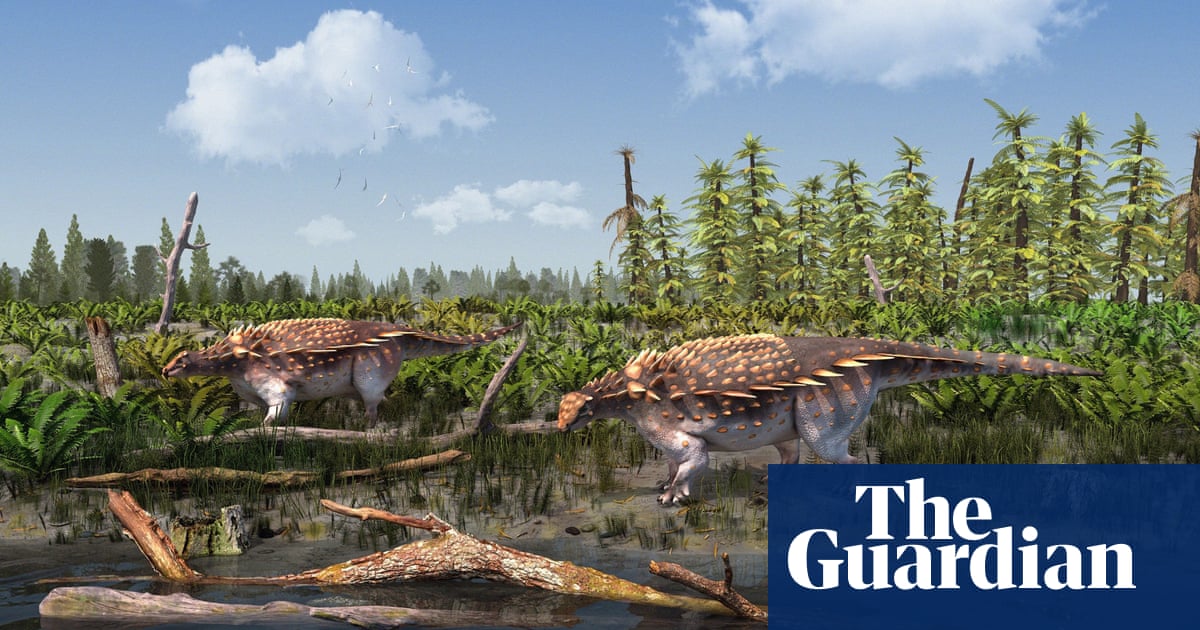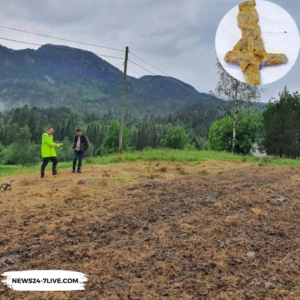The Isle of Wight has yielded another types of dinosaur, explicitly a protected dinosaur having a place with the Ankylosaur family. The fossilized remaining parts of the dinosaur, named Vectipelta barretti, were found in rocks going back somewhere in the range of 66 and 145 million years.
Regardless of its fearsome appearance with sharp edge like covering, this dinosaur was a plant-eater. The name Vectipelta barretti is a recognition for Profeesor Paul Barrett from the Normal History Gallery in London. The new species varies from the recently found Polacanthus foxii on the Isle of Wight, showing unmistakable contrasts in neck, back, and pelvic bones, as well as having more spiked defensive layer.
The revelation proposes that the ankylosaurs in China and Europe moved unreservedly between the two areas during the Early Cretaceous time frame. The discoveries shed light on the variety of dinosaur species present in Britain during that time and will prompt a reanalysis of other comparative fossil remaining parts.
The site where the new species was found, known as the Wessex Development, is viewed as critical for figuring out the eradication of dinosaurs. It is vital to take note of that the data gave depends on news stories up to June 2023, and later advancements might have happened from that point forward.
Also Read: 3,000 Years old Ancient Mummy Discovered in Peru’s Rubbish Dump

Paleontologists have uncovered the fossilized remaining parts of a formerly obscure types of dinosaur on the Isle of Wight, off the south bank of Britain. This surprising disclosure denotes the principal new protected dinosaur species to be found on the island in 142 years and has been named Vectipelta barretti.
Having a place with the ankylosaur family, this plant-eating monster grandstands cutting edge like spiked shield, imparting a fearsome appearance. While the Isle of Wight has been a gold mine of dinosaur fossils for a long time, the finding of Vectipelta barretti reveals new insight into the variety of species that once meandered the district during the Early Cretaceous time frame, somewhere in the range of a long time back.
Details about New Dinosaur Discovered (For R&D)
Also Read: Pterosaurs: The Discovery of a 107-Million-Year-Old Winged Reptile
The Discovery of Vectipelta barretti
The discovery of Vectipelta barretti marks a critical achievement for scientistss and dinosaur fans the same. The find was made in the Wessex Development, a topographical site eminent for its rich fossil stores. The Isle of Wight, frequently alluded to as the “Dinosaur Isle,” has a long history of yielding fossil fortunes, and this most recent option adds one more layer of interest to the locale’s paleontological importance.
Vectipelta barretti stands apart for its exceptional attributes among ankylosaurs. In spite of the fact that it imparts a few likenesses to the recently found ankylosaur Polacanthus foxii, researchers accept the two species are not firmly related.
Detailed analysis of the fossilized bones uncovers unmistakable contrasts in the neck, back, and pelvic designs, as well as a more intricate game plan of spiked shield. This drove scientists to group it as another species and give to it the name Vectipelta barretti to pay tribute to Teacher Paul Barrett, an unmistakable scientist and head of fossil vertebrates at London’s Regular History Exhibition hall.
Professor Barrett, who has committed twenty years of his profession to the investigation of dinosaurs, offered his enjoyment and thanks for being perceived through the naming of Vectipelta barretti. He stressed that any actual likeness among himself and the dinosaur is absolutely unplanned. The naming of this new species fills in as a demonstration of Teacher Barrett’s massive commitments to the field of dinosaur fossil science and his priceless mentorship to his partners and understudies.
Also Read: Xenohyla truncata: The Discovery of the First Amphibian Pollinator
The Ankylosaur Diversity
he identification of Vectipelta barretti adds a vital piece to the puzzle of ankylosaur diversity within the Wessex Formation and Early Cretaceous England. Previous assumptions regarding ankylosaur remains on the Isle of Wight centered around Polacanthus foxii, a well-known dinosaur from the region. However, the emergence of Vectipelta barretti challenges this notion, signaling a need for a comprehensive reevaluation of existing findings. This reanalysis will provide researchers with a more accurate understanding of ankylosaur diversity during the Wessex Formation’s geological period.
One of the most intriguing aspects of the Vectipelta barretti discovery is its close relation to Chinese ankylosaurs. This connection suggests that these ancient reptiles freely roamed between Asia and Europe during the Early Cretaceous period, approximately 145 to 66 million years ago.
The findings shed light on the intercontinental movement of dinosaurs and further enhance our knowledge of prehistoric migration patterns. The fact that Vectipelta barretti shares a closer affinity with Chinese ankylosaurs than its fellow Isle of Wight inhabitant Polacanthus foxii illustrates the intricate web of evolutionary connections between different regions.
The understanding of ankylosaur diversity, the Vectipelta barretti discovery holds significant implications for studying the extinction of dinosaurs. The Isle of Wight, particularly the Wessex Formation, offers a crucial resource for exploring the causes behind the mass disappearance of these magnificent creatures 66 million years ago.
Also Read: New Dinosaur Species Reveals Clues about Spinosaurus History

























+ There are no comments
Add yours